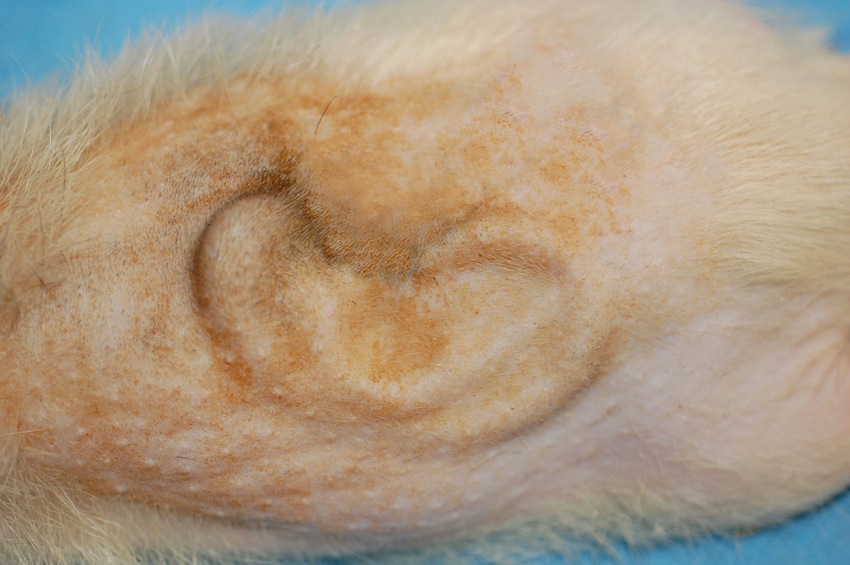MGH Researchers Grew An Artificial Human Ear from Animal Tissue
Massachusetts General Hospital researchers just grew an artificial human ear from animal tissue and cells.
In a study released last week in the Journal of the Royal Society Interface, researchers announced that the artificial human ear, which was grown on animal cells, looks and flexes like a regular human ear. Plus, it distortion is minimal growing on the animal, thanks to the incorporation of a thin wire frame in the ear. While the image of a human ear growing on the back of a rat may be slightly unnerving, this discovery is the first time that researchers have been able to grow a human ear with minimal distortion, which could lead to the growth of other artificial human parts for transplantation.
How is the ear made? MGH’s team used collagen from cows to make a 3D tissue scaffold, held in shape by a wire frame. They then populated that structure with ear cartilage cells from a sheep. After three months of being embedded on the backs of nude male rats, the ears showed less distortion than any other artificial ear that has been attempted to date. In fact, the authors of the study even called the ear “aesthetically pleasing.” Once the ears were removed, researchers found that the ears without titanium frames collapsed. The ones with the wire frameworks held their shape.
The study’s lead author, Cathryn Sundback, hopes that her findings will lead to a human clinical trial in the near future. “In addition to the work we have reported in the Journal of the Royal Society Interface, we have successfully completed a study in sheep where the complex geometry of our human shaped ear was maintained and stable cartilage was formed,” she says. “Our next step is to conduct a larger sheep study which would provide us with the necessary data to seek regulatory approval, which is the next step toward a clinical trial.”
This engineered ear is not the first artificial part to be grown this year. In May, a two-year-old girl received an artificial trachea grown from her own stem cells, and in April, researchers at Wake Forest University bioengineered an artificial ovary. The artificial ear, however, is one of the first human parts to be engineered strictly for aesthetic purposes and could be a breakthrough in reconstructive surgery. Pretty cool, but we still can’t get that image of a human ear growing on a rat’s back out of our heads.



